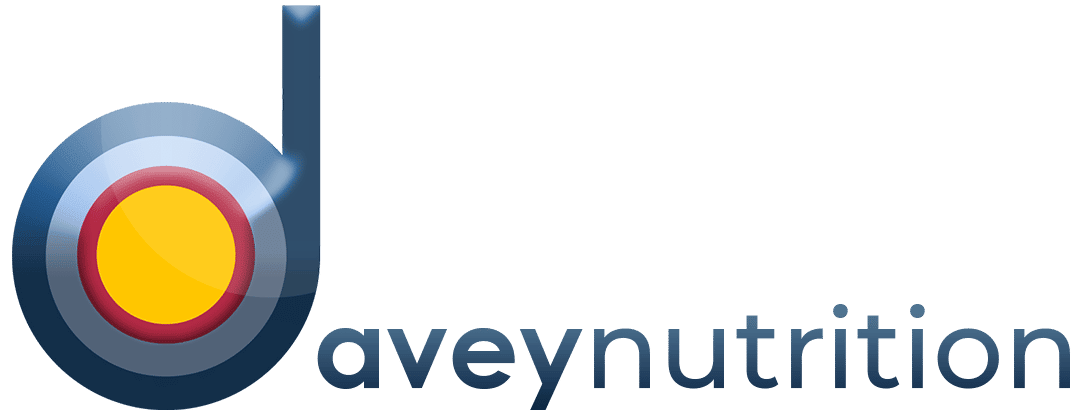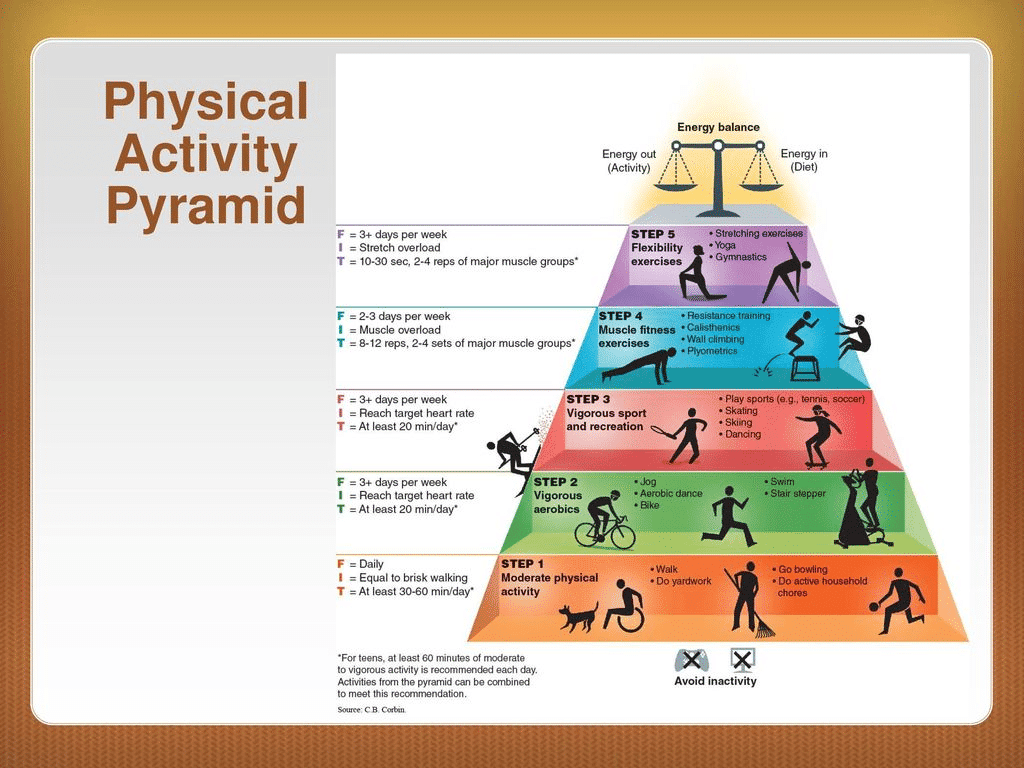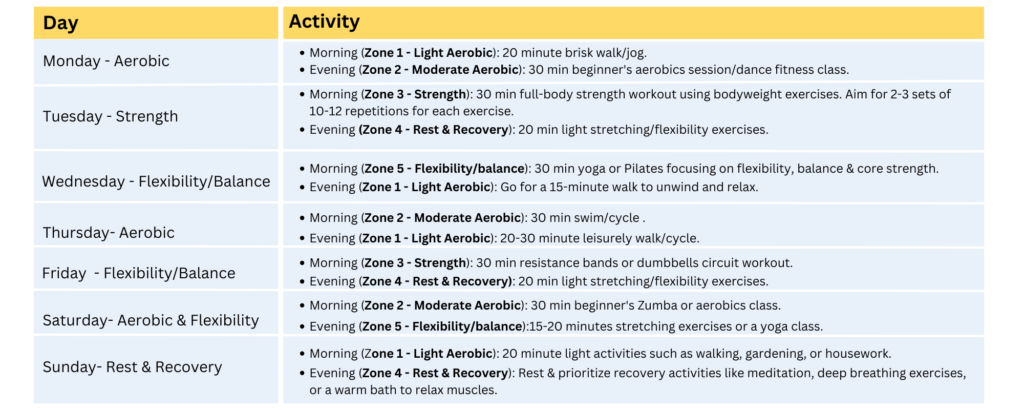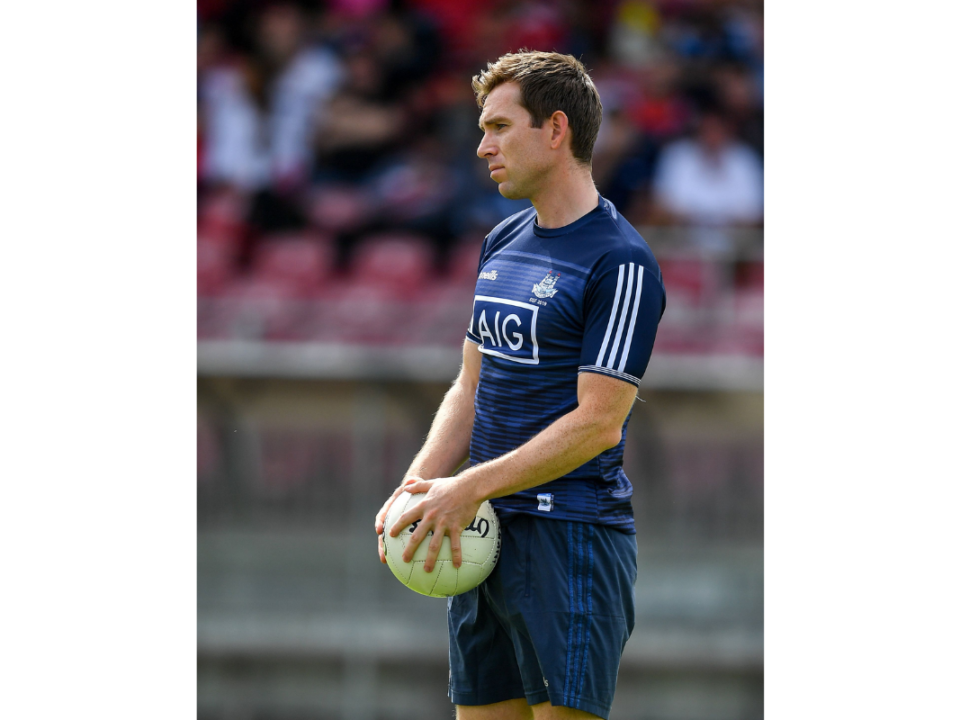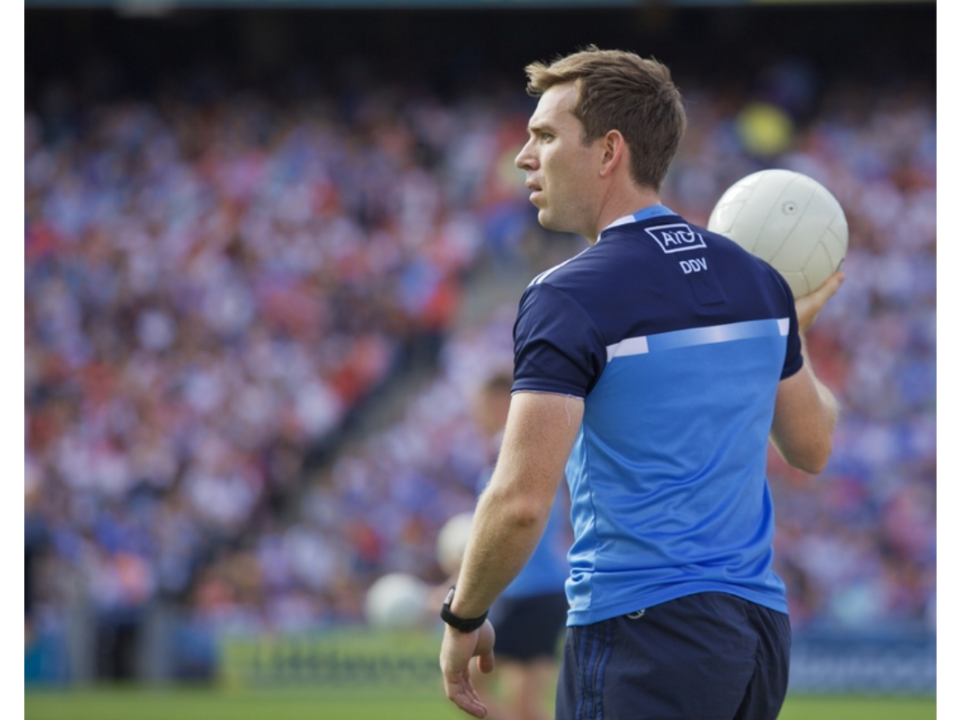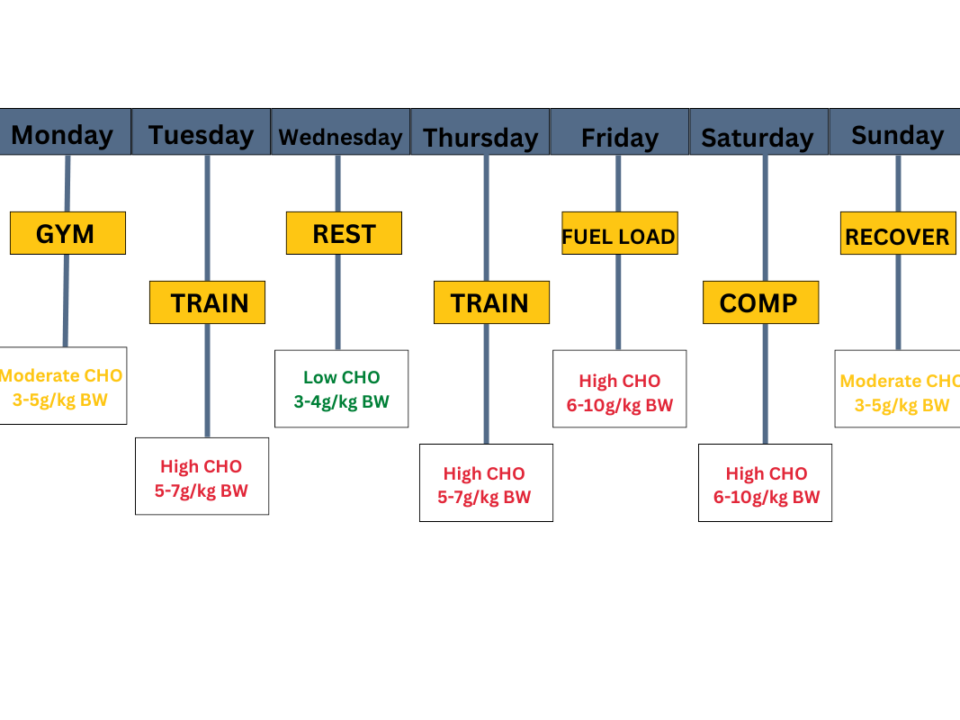The daveynutrition Guide to Physical Activity for Every Level
As January begins, familiar desires for transformation and renewal appear. It’s that time of the year when individuals, fueled by resolutions and a want for better health, embark on a journey towards physical improvement. So, whether you’re a seasoned athlete or a newcomer stepping into the area of health and fitness for the first time, this guide is tailored to highlight the pathways to a healthier, more active lifestyle suited to your unique goals.
What is Physical Activity?
Did you know that ‘exercise’ and ‘physical activity’ are different?
Exercise refers to structured activity which aims to improve one or more elements of fitness.
The World Health Organisation (WHO) describes physical activity as: ‘any bodily movement produced by skeletal muscles that requires energy expenditure – including activities undertaken while working, playing, carrying out household chores, travelling, and engaging in recreational pursuits’. Therefore, physical activity can be carried out outside of structured exercise sessions.
Lack of physical activity is now the 4th leading risk factor for mortality around the world and yet many of the world’s population are still not meeting the recommended guidelines of physical activity each week.

How Much Physical Activity Do I Need?
The WHO recommends that adults aged 18-64 should engage in 150 minutes of moderate-intensity or 75 minutes of vigorous physical activity each week. Moderate intensity exercise means that exercise occurs at 50-70% of your maximum heart rate (HR), whilst vigorous physical activity would occur at 70-85% of your maximum HR. A guideline to calculating your maximum heart rate would be to subtract your age from 220.
For example, if a person is 35 years of age, their maximum heart rate during physical activity estimation would be:
220 – 35 = 185 (beats per minute)
Moderate exercise for this person would occur at a heart rate of 93-130 beats per minute.
Vigorous physical activity for this person would occur at a heart rate of 130-157 beats per minute.
I Don’t Like The Gym, How Can I Resistance Train?
Resistance training, also known as strength training or weight training, is a form of exercise that uses resistance to build strength, endurance and muscle mass. The resistance can come from various sources such as weights, resistance bands, or even your body weight (e.g., push-ups, squats). The primary goal is to force your muscles to contract against an external resistance, leading to improvements in muscle strength, size and overall fitness.
After age 35, you begin to lose as much as 3% to 5% of lean muscle mass per decade. The loss of muscle mass is called ‘Sarcopenia’. Less muscle means greater weakness and less mobility, both of which may increase your risk of falls and injury. A 2015 report from the American Society for Bone and Mineral Research found that people with sarcopenia had 2.3 times the risk of having a low-trauma fracture from a fall, such as a broken hip, collarbone, leg, arm, or wrist (1).
The WHO also recommends that muscle strengthening activities should be done at least twice per week. Muscle strengthening activities include anything which involves resistance such as carrying heavy objects, walking uphill, cycling, bodyweight exercises (squats, push/pull ups etc.), gardening, lifting weights or using resistance bands.
Ways to incorporate resistance exercise into your life:
Bodyweight Exercises:
- Push-Ups
- Squats
- Lunges
- Planks
Resistance Bands:
- These are versatile tools that can be used for various exercises like bicep curls, tricep extensions, shoulder presses, and leg exercises. They come in different resistance levels, allowing for progressive overload.
Dumbbells/Free Weights:
- A set of dumbbells can offer a range of exercises such as dumbbell rows, bicep curls, shoulder presses and squats. Start with lighter weights and gradually increase as you become stronger.
Household Items:
- Use water bottles or milk cartons filled with water as makeshift weights.
Outdoor Activities:
- Incorporate resistance training into activities like hiking, trail running, or rock climbing. Your body will naturally engage various muscle groups to navigate different terrains and obstacles.
Yoga and Pilates:
- While primarily known for flexibility and core strength, these practices can also incorporate resistance exercises using body weight and props like resistance bands or yoga blocks.
(Note: you do not have to attend a gym to engage in muscle strengthening activities!)
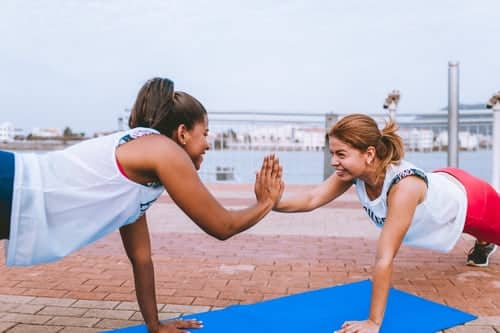
What if I Can’t Measure My Heart Rate?
If you do not have a fancy gadget for measuring heart rate, you can use the following guide to estimate when you are engaging in moderate or vigorous physical activity.
- Moderate physical activity: your breathing has quickened, you can hold a conversation but can’t sing!
- Vigorous physical activity: breathing is rapid and deep, you cannot hold a conversation other than saying a few words at a time.

Simple ways to increase your physical activity throughout the day could be:
- Walking or cycling to work if possible.
- Instead of meeting a friend for lunch or dinner, grab a coffee and head for a walk.
- Join an exercise class or group – it is much easier to motivate yourself when others are involved.
- Invest in a standing desk for work.
- Incorporate 5-10 ‘movement snacks’ into your day whereby every hour on the hour you move for 5-10 minutes. Each minute adds up!
- Play some games outdoors with the children.
- When on the phone, get up and walk around.
It’s extremely important to note that everyone has different physical fitness levels and it is important to start slowly, gauge how you feel and build your levels slowly, with the guidance of a trained professional and in conjunction with guidance from your GP.
Did you know that there is a physical activity pyramid just like the food pyramid?
The above pyramid contains 6 levels containing different physical activity types and intensities and it can help us to plan our physical activity. Each level contains the FIT principles (described in detail later) which determine how often (F-Frequency), how intense (I- Intensity) and for how long (T-Time) the movements at each level should be carried out.
The bottom, broadest level is Step 1, which takes regular daily movement into account and this should contribute the greatest amount to our physical activity. Aim to engage in activities from this level daily for at least 30-60 minutes. Activities from this level include normal movement each day, housework, walking around or taking the stairs instead of the lift.
Step 2 and 3 refer to vigorous aerobic activity which we should aim to do 3 times per week either in a team sport setting or individually for at least 20 minutes.
In Step 4, we can see strengthening exercises such as resistance training. Aim to perform this type of exercise 2-3 days per week and to practice the principle of progressive overload on major muscle groups. Progressive overload is discussed in detail below.
Step 5 involves ensuring that we maintain flexibility and mobility by including stretching and activities such as yoga in our routine, at least 3 times per week.
Step 6 refers to energy balance. In order to remain in a balance of energy we must be expending (or ‘burning’) the same amount of energy as we are consuming. Any shift in energy balance will result in a negative or positive energy balance and subsequent weight loss or gain.
An example of a typical exercise week, for a beginner, using the physical activity pyramid:
When thinking about starting an exercise regime, consider the following terms:
Specificity & Individuality: The regime you follow must be individual to you based on your current fitness level and goals. A person who has not done any physical activity in months will have different levels of fitness and different goals compared to a Premier League football player! Think carefully about how realistic your goals are and make reasonable short and long term plans to achieve these goals in a sustainable manner. In addition, remember that your individual response to exercise may be very different to someone following a similar plan or pursuing a similar goal.
Progressive Overload: This refers to continuously adding to your current exercise regime in order to improve. To make progress, we must constantly adapt and add to the stimulus on the body. This may include adding more weight to the bar in the gym or increasing the length of your run. Progressive Overload allows for adaptation over time, enabling us to perform better.
Reversibility: A reduction in fitness may occur if you stop training or significantly reduce the training you had previously been doing. However, there is a fine line between optimal training for an individual (based on their current fitness level) and allowing for adequate recovery. Optimal recovery allows for progressive overload and adaptations to occur correctly without the risk of injury or fatigue. Consistency with training and monitoring training load is of utmost importance.
Check out this article to further understand and optimise your recovery.
Variance: It’s important to vary your regime to continuously challenge your body and to ensure that you do not become fatigued or bored of your exercise regime.

So, Where Do You Start?
In conjunction with recommended guidelines and the pyramid outlined above, the following acronym may be helpful to enable you design and monitor your individual workout plan:
FITT
Frequency: Decide how often you are going to aim to exercise. Be realistic! Don’t plan to run for 1 hour for 5 days each week if you currently struggle to walk up the stairs! A more realistic goal for frequency in this example would be to aim to walk at a brisk pace for 3 minutes and jog for 1 minute for a total of 15-20 minutes three times per week initially.
Intensity: This refers to how intense your workout is and again, this must be very specific to you. If we consider the above example, adding 100 metres sprints into your first day of your running programme may not be the wisest option! However, once you become comfortable with a pace you can sustain, you may increase the speed of a shorter run once per week and build on this pace over time.
Time: How long will each session be? This will depend on your goals and of course, your schedule. If you are a beginner, start out by aiming for the recommended levels of physical activity each week. If you are a more advanced athlete, you may be in a position to increase the duration of training sessions or increase the intensity.
Type: Is your exercise specific to your goals? If you are someone who wants to increase their muscle mass, it would be important to focus on resistance exercise to achieve this goal. If you are aiming to increase your speed during a game, your training type must reflect this.

Exercise Snacking
Exercise snacking refers to a novel approach to fitness that involves incorporating short bursts of physical activity throughout the day. Similar to how you might consume small, nutritious snacks to sustain energy levels and curb hunger between meals, exercise snacking involves performing brief bouts of exercise to accumulate health benefits gradually. These quick bursts of activity, which can last anywhere from a few seconds to a few minutes, aim to increase overall physical activity levels and improve metabolic health. Examples of exercise snacking include performing a quick set of squats or push-ups during a work break, taking the stairs instead of the lift, or doing a few minutes of high-intensity interval training (HIIT) exercises throughout the day. Incorporating exercise snacking into daily routines can help individuals achieve recommended physical activity guidelines, improve glycaemic (‘blood sugar’) control, enhance cardiovascular health, and increase energy levels, making it a practical and time-efficient approach to staying active.
Practical examples:
- Desk Push-Ups (2 minutes): Stand a few feet away from your desk, place your hands on the edge of the desk shoulder-width apart, and perform push-ups against the desk. Aim for 10-15 reps.
- Wall Sit (1 minute): Stand with your back against a wall and slide down until your knees are at a 90-degree angle. Hold this position for 1 minute or as long as you can.
- Jumping Jacks (2 minutes): Perform jumping jacks continuously for 2 minutes. This exercise engages your entire body and boosts your heart rate.
- Squats (2 minutes): Stand with feet shoulder-width apart and perform squats for 2 minutes. Focus on proper form, keeping your chest lifted and knees behind toes.
- Plank (1 minute): Hold a plank position on your forearms for 1 minute. Ensure your body forms a straight line from head to heels.
- High Knees (2 minutes): Stand in place and lift your knees as high as possible while pumping your arms. Continue for 2 minutes.
Youtube has numerous workout videos suitable for all levels. Don’t forget that we also have a fantastic blog with some full body workouts designed by Cillian Rearden for you to try!

Conclusion
People who are involved in team sports or those following their own training schedule often have varied days of moderate intensity activity, higher intensity activity and rest days. For this reason, the daveynutrition meal plans have been designed to suit a typical training week with training and rest days. On training days, meal plans contain a slightly higher amount of carbohydrate in order to adequately fuel training. On rest days, meal plans are packed full of protein to aid the recovery process and contain a little less carbohydrate to account for lower energy requirements. The meal plans can be customised to suit every training schedule and fueling need.
Similarly, all recipes can be filtered based on exercise intensity and to account for preparation and recovery from exercise. Use the drop-down filter on the recipe page to select a recipe that best suits your activity level.
References:
- Harvard Health Publishing (2016). Preserve your muscle mass – Harvard Health. [online] Harvard Health. Available at: https://www.health.harvard.edu/staying-healthy/preserve-your-muscle-mass.
